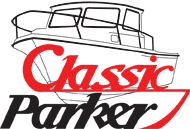gray duck
Well-known member
There was another post recently about the "cabin sail" and I have wanted to ask for some pointers on how to manage docking better in a cross wind. I have a 25 ton CG license and have been on the water in lg sailboats, single inboard launches and outboard skiffs etc and this 2520 with twin 150's (I can admit) has been the most challenging to dock in adverse conditions - wind and tide opposite, cross winds, small spot to tuck into etc. I guess I'm looking for any tips regarding use of twins in this boat. My initial thought/feeling was that the engines are too close to reallly use in Fwd and Rev to pivot like with twin inboards or twins on a cat. Is that true? Sometimes I'll use fwd on one engine by itself to help correct a little in terms of alignment for coming up on the trailer.
I think my main problem in docking has been coming in on the port side, getting the fwd quarter too close to the dock 'cause I can't see over the edge or I'm getting blown into the dock and then I don't seem to have time to crank the wheel around and put it into rev to pull the stern towards the dock. Question here: when you're trying to back to port, do you use both engines, stbd only or port only? Thanks for the advice.
For those who boat in areas where there is little in the way of tides or river current you only have the wind to contend with. Where I am the wind is usually about 15 kts and the current 3 kts at max ebb and flood. In other words you can't just come in at a slow cautious drifting speed.
I think my main problem in docking has been coming in on the port side, getting the fwd quarter too close to the dock 'cause I can't see over the edge or I'm getting blown into the dock and then I don't seem to have time to crank the wheel around and put it into rev to pull the stern towards the dock. Question here: when you're trying to back to port, do you use both engines, stbd only or port only? Thanks for the advice.
For those who boat in areas where there is little in the way of tides or river current you only have the wind to contend with. Where I am the wind is usually about 15 kts and the current 3 kts at max ebb and flood. In other words you can't just come in at a slow cautious drifting speed.

























